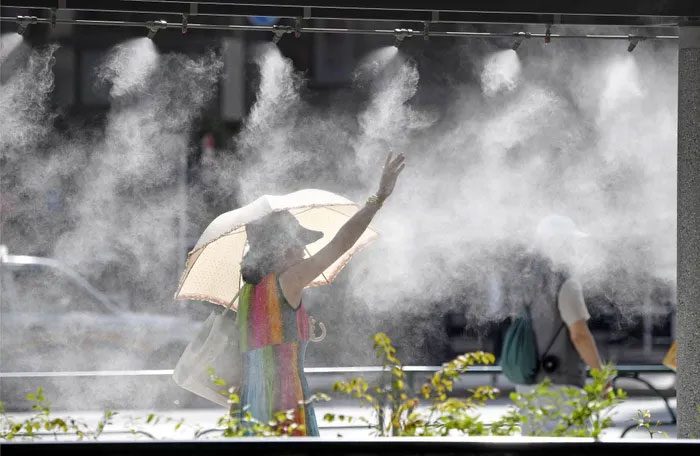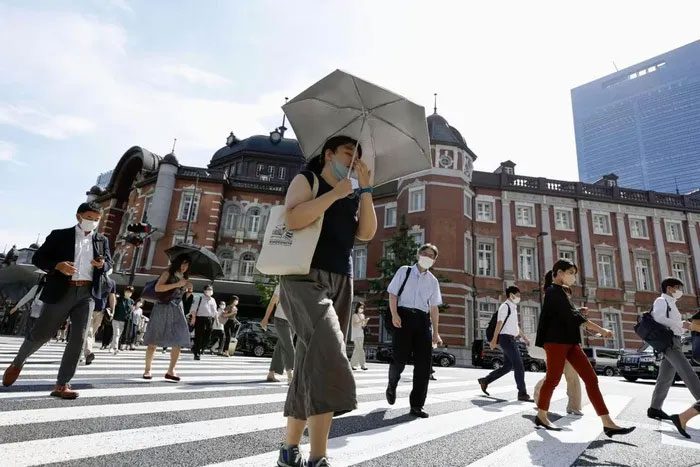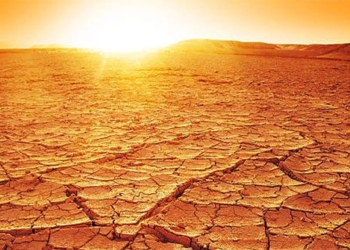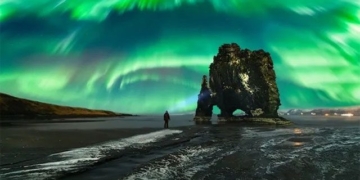Daytime temperatures exceeding 40 degrees Celsius were once rare in Japan. However, this level of heat has become so common that experts are now searching for new terms to describe this phenomenon.
The Japan Meteorological Agency currently classifies any day with temperatures above 35 degrees Celsius as “moshobi”, which translates to “terribly hot day.” Any night with temperatures above 25 degrees Celsius is referred to as “nettaiya,” meaning “tropical night,” according to South China Morning Post.
However, these terms no longer fully reflect the situation, as Japan just experienced June with record-high temperatures since 1875, with areas in Gunma Prefecture reaching 40.2 degrees Celsius. This June also marked the first time Japan recorded temperatures exceeding 40 degrees Celsius during the month.
As global temperatures rise this summer, Japanese experts are proposing new classification terms to more accurately describe the intensity of this weather phenomenon.
More Than Just Terms
After surveying 130 meteorologists and experts, the Japan Weather Association proposed more extreme temperature thresholds. They suggest that temperatures above 40 degrees Celsius should be called “kokushobi,”</strong meaning “catastrophic hot day,” while nights with temperatures no lower than 30 degrees Celsius would be described as “chounettaiya,” meaning “super tropical night.”
The weather association stated that alternative proposals would also include terms like “days as hot as fire,” “scorching days,” and “nights as hot as boiling water.”

Misting machines in Tokyo on August 1. Authorities urge the public to stay hydrated and be cautious of heatstroke, while also looking out for elderly neighbors during peak heat days. (Photo: Kyodo).
“In the past, temperatures of 40 degrees Celsius were unheard of, but now it is no longer strange,” said Kimiko Naraoka, a meteorologist from Nippon Television. “Now, it is essential to inform everyone that it’s not just about one extremely hot day.”
“We will see many more days like this in the future, making it difficult for people to sleep,” she added. “But I still hope we won’t have to use these terms too frequently.”
Takeshi Tendachi, a member of the association and a weather forecaster at Fuji TV, acknowledged that rising temperatures worldwide is a serious concern.
“The record heatwave in Europe this summer is not just a local issue,” he said. “How should we cope with disaster-level temperatures in the future? How can we prevent the elderly from suffering from heat shock even when indoors at night? I am very worried. It is crucial that we warn people about the dangers.”
“Records Could Be Broken at Any Time”
According to the association, Japan has only experienced 67 instances of temperatures exceeding 40 degrees Celsius since 1875. However, in the first 125 years, there were only 8 recorded instances of such temperatures. This means that since the year 2000, Japan has increasingly recorded temperatures above 40 degrees Celsius.
The rate of temperature increase is also rising, with 40 reports of exceeding 40 degrees Celsius since 2018. The highest temperature recorded in Japan was in 2018, when Saitama Prefecture saw areas reach 41.1 degrees Celsius. Shizuoka Prefecture, southwest of Tokyo, also experienced similar temperatures in 2021. The association warns that “this record could be broken at any time.”

The Japanese government warned on August 8 about “sweltering heat” across the country in the coming week. (Photo: Kyodo).
On August 8, the Japanese government warned about “sweltering heat” across the country in the upcoming week. Meteorologists predict temperatures above 36 degrees Celsius, along with high humidity. Both factors are above the average for this time of year.
Officials urge citizens to stay hydrated and be cautious of heatstroke while also looking out for elderly neighbors. They also advise the public not to endure extreme heat to save money, especially amid rising energy costs. Instead, they should set air conditioning to cooler settings and sit directly in the path of cool airflow.
Electricity demand has surged to record levels this summer. The consumption of 52,700 megawatts in one day at the end of June far exceeded the previous record of 47,300 megawatts set in the summer of 2018.
To cope with the increased electricity demand, the Japanese government is intensifying efforts to bring some nuclear reactors back online, 11 years after the Fukushima Daiichi nuclear crisis.




















































